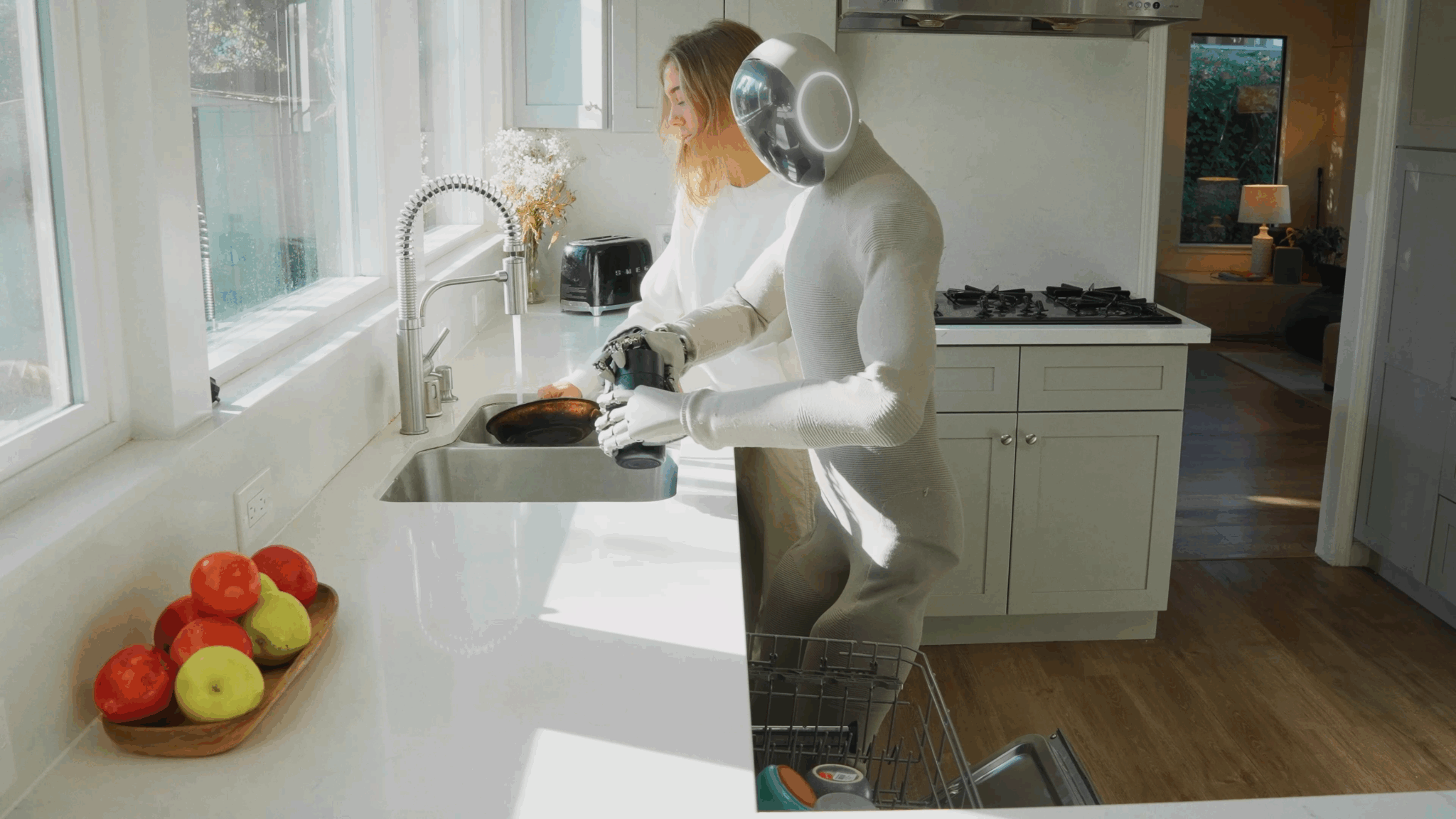
Humans learn the norms, values and behaviors of society from each other — and Bernt Børnich, founder and CEO of 1X Technologies, thinks robots should learn like this, too.
“For robots to be truly intelligent and show nuances like being careful around your pet, holding the door open for an elderly person and generally behaving like we want robots to behave, they have to live and learn among us,” Børnich told the AI Podcast.
1X Technologies is committed to building fully autonomous humanoid robots, with a focus on safety, affordability and adaptability.
Børnich explained how 1X Technologies uses a combination of reinforcement learning, expert demonstrations and real-world data to enable its robots to continuously learn and adapt to new situations.
NEO, the company’s upcoming robot, can perform household tasks like vacuuming, folding laundry, tidying and retrieving items. It’s built with operational safety at its core, using tendon-driven mechanisms inspired by the human musculoskeletal system to achieve low energy consumption.
Børnich highlights the potential for robots to enhance human productivity by helping handle mundane tasks, freeing people up to focus more on interpersonal connections and creative activities.
Learn more about the latest in physical AI and robotics at NVIDIA GTC Paris, which takes place from June 10-12. Register to attend humanoid-related sessions, including:
Time Stamps
05:18 – 1X Technologies’ approach to robot safety.
11:36 – How world models enable robots to search backwards from the goal.
16:51 – How robots can free humans up for more meaningful activities.
22:29 – NEO answers the door so Børnich can interview a candidate.
You Might Also Like…
How World Foundation Models Will Advance Physical AI With NVIDIA’s Ming-Yu Liu
AI models that can accurately simulate and predict outcomes in physical, real-world environments will enable the next generation of physical AI systems. Ming-Yu Liu, vice president of research at NVIDIA and an IEEE Fellow, explains the significance of world foundation models — powerful neural networks that can simulate physical environments.
Roboflow Helps Unlock Computer Vision for Every Kind of AI Builder
Roboflow’s mission is to make the world programmable through computer vision. By simplifying computer vision development, the company helps bridge the gap between AI and people looking to harness it. Cofounder and CEO Joseph Nelson discusses how Roboflow empowers users in manufacturing, healthcare and automotive to solve complex problems with visual AI.
Imbue CEO Kanjun Qiu on Transforming AI Agents Into Personal Collaborators
Kanjun Qiu, CEO of Imbue, explores the emerging era where individuals can create and use their own AI agents. Drawing a parallel to the PC revolution of the late 1970s and ‘80s, Qiu discusses how modern AI systems are evolving to work collaboratively with users, enhancing their capabilities rather than just automating tasks.
